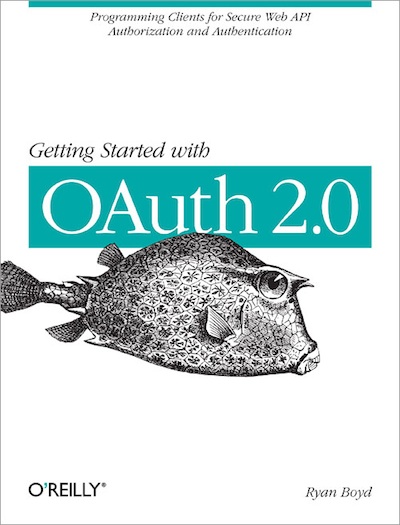

Authentication
Authorization
Have you ever shared your password with an app so it could use your data?
Yes :-(
Developer opportunity
1) Eliminate the need for users to reveal their password to apps
2) Restrict the level of data available to apps
3) Allow users to revoke access to their data
OAuth 2.0
for Authorization
Do you use the same username & password for multiple web sites?
Yes :-(
How many keystrokes do you type to sign up for a new account?
50+!
Developer opportunity
1) Minimize how many passwords users need
2) Optimize sign-up flows to onboard users faster
OpenID Connect
Agenda
- Terminology
- Why do we have OAuth 2.0?
- Authorization: JS, server-side, mobile
- Authentication
- What's this controversy?
- Resources
Old School: ClientLogin
- App asks user for their Google password
- App asks Google auth servers for a token to access Calendar (over SSL)
- App stores token, sends it to Calendar API
- Token expires 2 weeks later; goto 1
Security properties:
- (+) Stored tokens have limited scope
- (+) Password only sent over SSL to Google
- (-) Developers have direct access to password
- (-) Developers are "encouraged" to store password
Old School: AuthSub
- App redirects user to Google asking for a token to access Calendar
- User approves and is redirected back to app with token in URL
- App exchanges one-time token for long-lived token (over SSL)
- App stores long-lived token, sends it to Calendar API
Security properties:
- (+) Stored tokens have limited scope
- (+) Password only sent over SSL to Google
- (+) Developers do not have access to password
- (+) Users can revoke access to apps
- (-) Forever-lived tokens often sent in the clear to API
Old School: Secure AuthSub
Don't want to see the warning here?

Then you must:
- Register your app
- Use cryptographic signatures on every request!
Old School: OAuth 1.0
Standardized web-based flow like Secure AuthSub
- Still didn't rely upon SSL/TLS for APIs
- Painful cryptographic signatures on every request!
New School: OAuth 2.0
Standardized flows
- Relies upon SSL/TLS for APIs
- (Mostly) eliminates cryptographic signatures
OAuth 2.0 for Authorization
RFC 6749 is a:
Framework
100+ APIs
Goal
Getting Started
Developer Registration
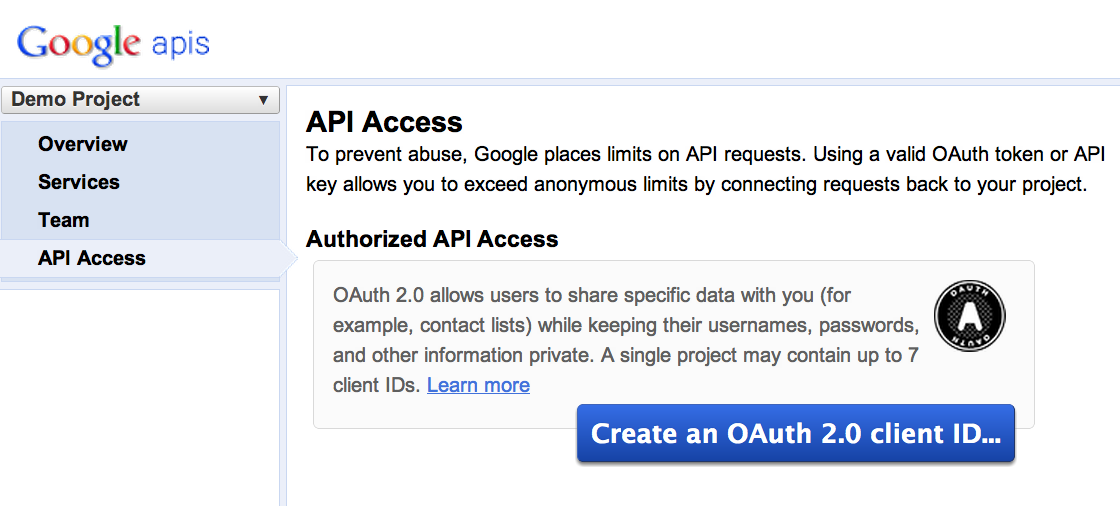
Pure JavaScript Flow
Developing Client-side Applications
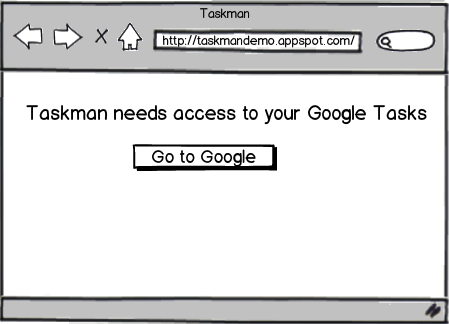

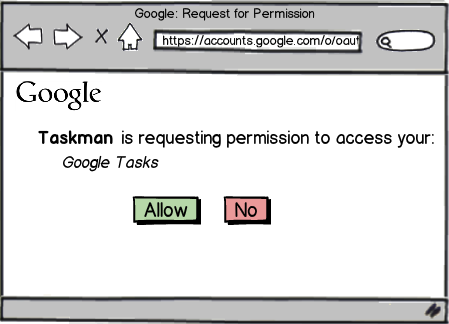



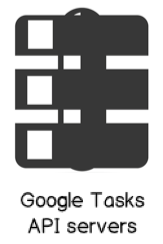
Client-side Flow in JavaScript
Google APIs Client Library for JavaScript
Client-side Flow in JavaScript
Google APIs Client Library for JavaScript
gapi.auth.authorize({
client_id: '387636757294.apps.googleusercontent.com',
scope: 'https://www.googleapis.com/auth/tasks'},
handleAuthResultPopup);
function handleAuthResultPopup() {
alert(gapi.auth.getToken());
}
Client-side Flow in JavaScript
Step 1 - App directs the user to Google for Authorization
<script type="text/javascript"> var clientId = '387636757294.apps.googleusercontent.com'; var authorizationUrlBase = 'https://accounts.google.com/o/oauth2/auth'; var redirectUri = 'https://taskmandemo.appspot.com/oauth2callback.html'; var scope = 'https://www.googleapis.com/auth/tasks'; function startOauth() { var url = authorizationUrlBase; url += '?response_type=token' + '&redirect_uri=' + encodeURIComponent(redirectUri) + '&client_id=' + encodeURIComponent(clientId) + '&scope=' + encodeURIComponent(scope); var w = window.open(url, 'oauth', 'width=500,height=400'); } </script>
Client-side Flow in JavaScript
Step 1 - App directs the user to Google for Authorization
https://accounts.google.com/o/oauth2/auth? client_id=387636757294.apps.googleusercontent.com& scope=https://www.googleapis.com/auth/tasks& redirect_uri=https://taskmandemo.appspot.com/oauth2callback.html& response_type=token
Client-side Flow in JavaScript
Step 2a - User authorizes access
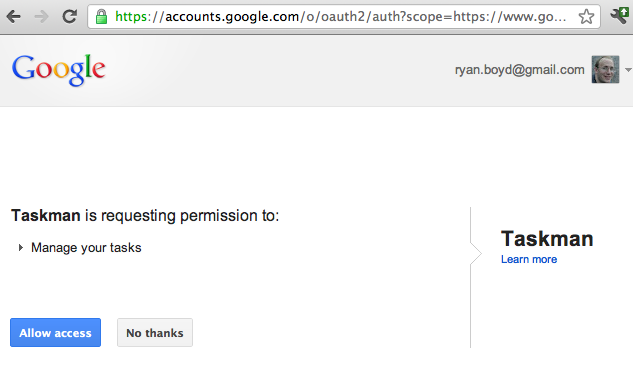
Client-side Flow in JavaScript
Step 2b - User is redirected back to the app
https://taskmandemo.appspot.com/oauth2callback.html# access_token=ya29.AHES6ZT8XLGWjlrYfP1KvkLQVvYj81C6uA_bUsaZBKWB4ZE& token_type=Bearer& expires_in=3600
GOAL!
Client-side Flow in JavaScript
Questions!
- How do I get the token back to the app from the popup window?
- How do I get another access token?
- What happens if the user isn't logged in?
Client-side Flow in JavaScript
Summary
- You're looking for simplicity
- You like coding in JavaScript
- You only need access when the user is logged into their account at the API provider
Server-side Flow in Python
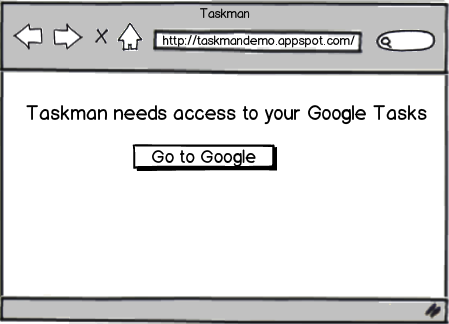

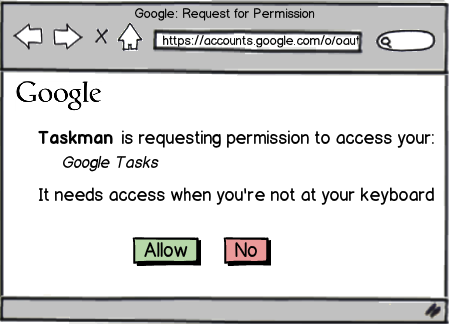


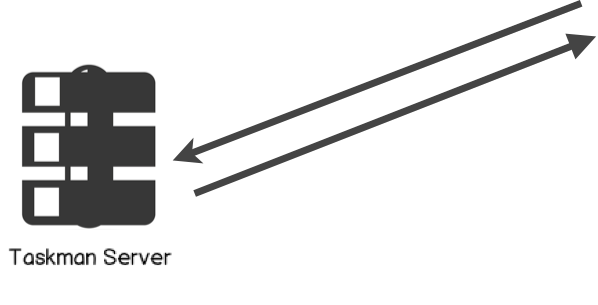



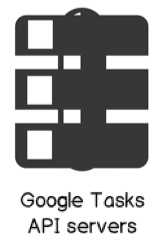
Server-side Flow in Python
Step 1 - App re-directs the user
flow = OAuth2WebServerFlow( # Visit https://developers.google.com/console to # generate your client_id, client_secret and to # register your redirect_uri. client_id='387636757294.apps.googleusercontent.com', client_secret='-8IwOyyundwNY6W0B', scope='https://www.googleapis.com/auth/tasks') callback = self.request.relative_url('/oauth2callback') authorize_url = flow.step1_get_authorize_url(callback) self.redirect(authorize_url)
Server-side Flow in Python
Step 1 - App re-directs the user
https://accounts.google.com/o/oauth2/auth? client_id=387636757294.apps.googleusercontent.com& scope=https://www.googleapis.com/auth/tasks& redirect_uri=https://taskmandemo.appspot.com/oauth2callback& response_type=code& access_type=offline
Server-side Flow in Python
Step 2a - User authorizes access
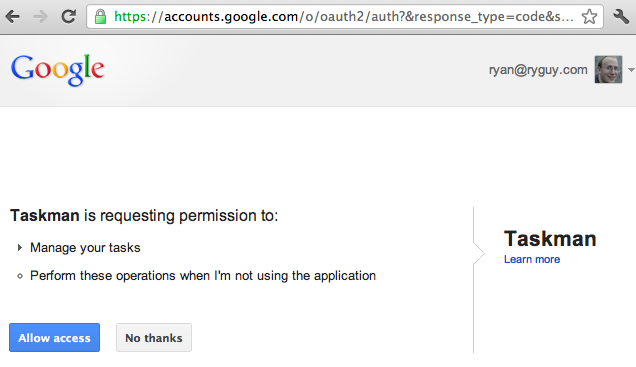
Server-side Flow in Python
Step 2b - User is redirected back to the app
https://taskmandemo.appspot.com/oauth2callback?
code=4/jHpY6Rslb32PWBiR9bU6wJ4GrMmF.EjOUBPzd
Server-side Flow in Python
Step 3 - App exchanges authorization code for access token
credentials = flow.step2_exchange(self.request.params) print 'Access token: %s' % credentials.access_token
GOAL!
print 'Refresh token: %s' % credentials.refresh_token
Server-side Flow in Python
Step 3 - App exchanges authorization code for access token
POST /o/oauth2/token HTTP/1.1 Host: accounts.google.com client_id=387636757294.apps.googleusercontent.com& redirect_uri=https://taskmandemo.appspot.com/oauth2callback& grant_type=authorization_code& code=4/jHpY6Rslb32PWBiR9bU6wJ4GrMmF.EjOUBPzd& client_secret=-8IwOyyundwNY6W0B
{
"access_token":"1/fFAGRNJru1FTz70BzhT3Zg",
"refresh_token":"1/xEoDL4iW3cxlI7yDbSRFYNG01kVKM2C-259HOF2aQbI"
"expires_in":3600,
"token_type":"Bearer",
}
Server-side Flow in Python
Step 4 - App exchanges refresh token for a new access token
# nothing to see here!
Server-side Flow in Python
Step 4 - App exchanges refresh token for a new access token
POST /o/oauth2/token HTTP/1.1 Host: accounts.google.com Content-Type: application/x-www-form-urlencoded client_id=387636757294.apps.googleusercontent.com& client_secret=-8IwOyyundwNY6W0B& refresh_token=1/xEoDL4iW3cxlI7yDbSRFYNG01kVKM2C-259HOF2aQbI& grant_type=refresh_token
{
"access_token":"1/hGAFZKUio3NOc90BxjU48l",
"expires_in":3600,
"token_type":"Bearer"
}
Server-side Flow in Python
Questions!
- When do refresh tokens expire?
- How do I store the refresh tokens?
Server-side Flow in Python
Making it even easier: the decorator pattern
decorator = OAuth2Decorator(
client_id='387636757294.apps.googleusercontent.com'
client_secret='-8IwOyyundwNY6W0B'
scope='https://www.googleapis.com/auth/tasks')
http = httplib2.Http(memcache)
service = build("tasks", "v1", http=http)
class MainHandler(webapp.RequestHandler):
@decorator.oauth_required
def get(self):
http = decorator.http()
tasks = service.tasks.list(tasklist='@default').execute(http)
Server-side Flow in Python
Summary
- You're looking for long-lived access to user data
- You need access when the user isn't at the keyboard
- You need to call the API from server-side code
Other Flows
Other Flows
- Resource Owner Password Credentials
- App-based Authorization
- Client Credentials
- JWT Assertion
I have the token. Now what?
Calling the API
But... how do I call the API?
Using access tokens
Using a HTTP Header:
GET /tasks/v1/lists/@default/tasks HTTP/1.1 Host: www.googleapis.com Authorization: Bearer 1/hGAFZKUio3NOc90BxjU48l
Using a Query Parameter:
GET /tasks/v1/lists/@default/tasks?access_token=1/hGAFZKUio3NOc90BxjU48l HTTP/1.1 Host: www.googleapis.com
Tell me more about scopes
Getting authorization for multiple APIs at once
Space-delimited list!
https://www.googleapis.com/auth/tasks https://www.googleapis.com/auth/plus.me
Mobile Authorization
Three Techniques
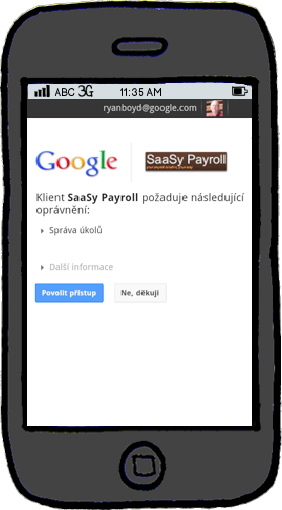
- Cross-platform - Embedded WebViews
- Cross-platform - System web browser
- Android-specific - GoogleAuthUtil
GoogleAuthUtil
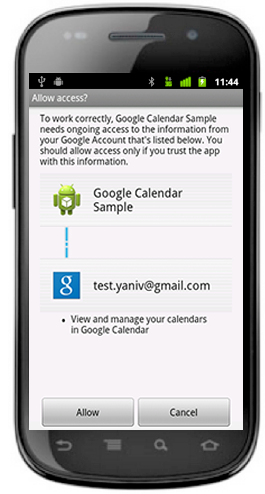
GoogleAuthUtil
App Registration
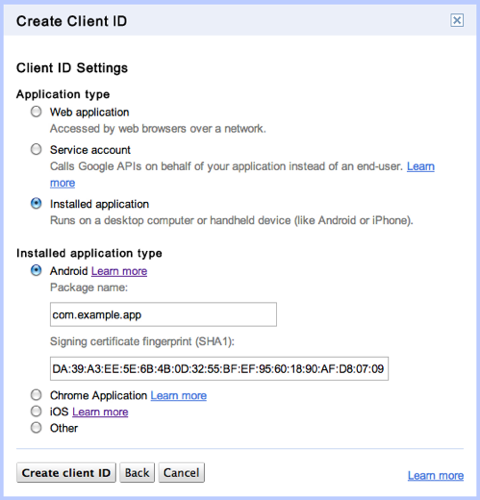
GoogleAuthUtil
Acquiring an access token
// Allow user to select an account // AccountManager.getAccountsByType("com.google"); String scope = "https://www.googleapis.com/auth/tasks"; // Get an access token for 'email' account and requested scope String token = GoogleAuthUtil.getToken(context, email, scope);
GOAL!
OpenID Connect
(OAuth 2.0 for Login)
Authentication Goals
Traditional signup form
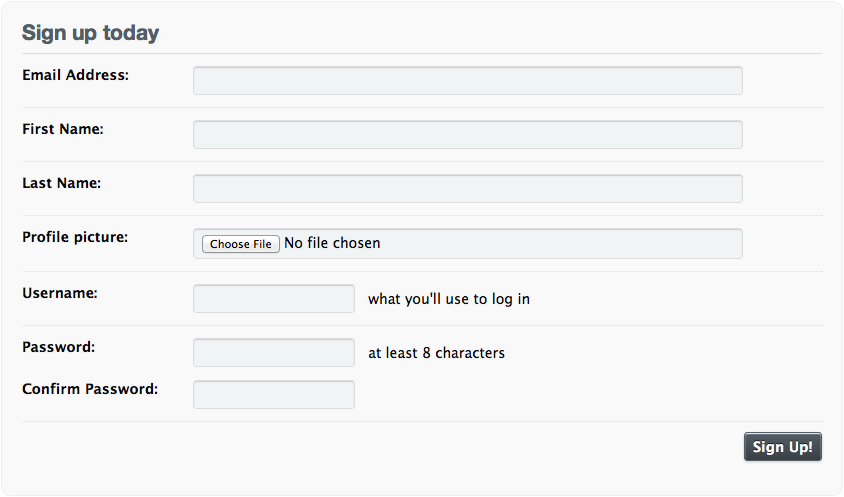
Authentication Goals
New signup form
First name:
Last name:
Email:
Profile:
Authentication Goals
- Make it faster and easier to onboard users
- Securely get a unique, stable user identifier
- Personalize your site
Authentication
Step 1 - Use OAuth to get an access token
| Scope | Description |
|---|---|
| https://www.googleapis.com/auth/userinfo.profile | Unique id, name, profile photo, profile URL, country, language, timezone, birthdate, etc. |
| https://www.googleapis.com/auth/userinfo.email | E-mail address |
Request access:
https://accounts.google.com/o/oauth2/auth? client_id=387636757294.apps.googleusercontent.com& scope=https://www.googleapis.com/auth/userinfo.profile%20https://www.googleapis.com/auth/userinfo.email& redirect_uri=https://taskmandemo.appspot.com/oauth2callback-authn.html& response_type=token
Authentication
Step 2 - Use TokenInfo API to get a secure, unique user identifier
https://www.googleapis.com/oauth2/v1/tokeninfo? access_token=
{
"issued_to": "387636757294.apps.googleusercontent.com",
"audience": "387636757294.apps.googleusercontent.com",
"user_id": "113487456102835830811",
"scope": "https://www.googleapis.com/auth/userinfo.profile https://www.googleapis.com/auth/userinfo.email",
"expires_in": 3574,
"email": "ryan@ryguy.com",
"verified_email": true,
"access_type": "online"
}
Personalization
Use UserInfo API to get user profile data
https://www.googleapis.com/oauth2/v1/userinfo? access_token=
{ "id": "113487456102835830811", "email": "ryan@ryguy.com", "verified_email": true, "name": "Ryan Boyd", "given_name": "Ryan", "family_name": "Boyd", "link": "https://plus.google.com/113487456102835830811", "picture": "https://lh4.googleusercontent.com/-BET-bMzn99g/AAAAAAAAAAI/AAAAAAAAAQ8/wV0kQ3VUjOE/photo.jpg", "gender": "male", "birthday": "0000-10-05", "locale": "en" }
Using Google+ Sign-In: Web
Rendering the Button

<script src="http://plus.google.com/js/plusone.js"></script>
<div id="signinButton">
<span class="g-signin"
data-scope="https://www.googleapis.com/auth/plus.login"
data-clientid="387636757294.apps.googleusercontent.com"
data-redirecturi="postmessage"
data-accesstype="offline"
data-cookiepolicy="single_host_origin"
data-callback="handleAuthResult">
</span>
</div>
<div id="result"></div>
Using Google+ Sign-In: Web
Handling the Callback
function handleAuthResult(authResult) {
alert(authResult['access_token']);
}
GOAL!
Using Google+ Sign-In: Mobile
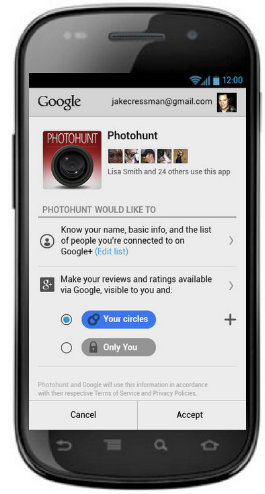
OAuth 2.0 "Controversy"
Some of Eran's Concerns
- It's only a Framework, not a Specification
- Bearer Tokens are Bad; Signatures are Important
- Expiring Tokens are Painful
- Standards Committees are Rotten
Tools
OAuth 2.0 Playground
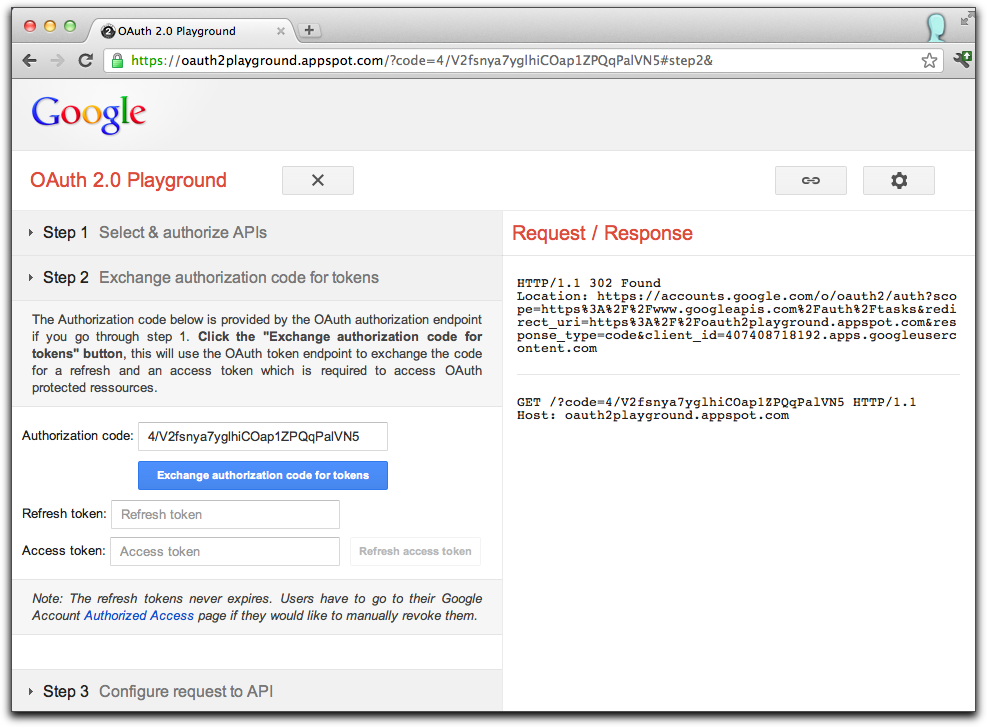
developers.google.com/oauthplayground/
OAuth 2.0 Login Demo
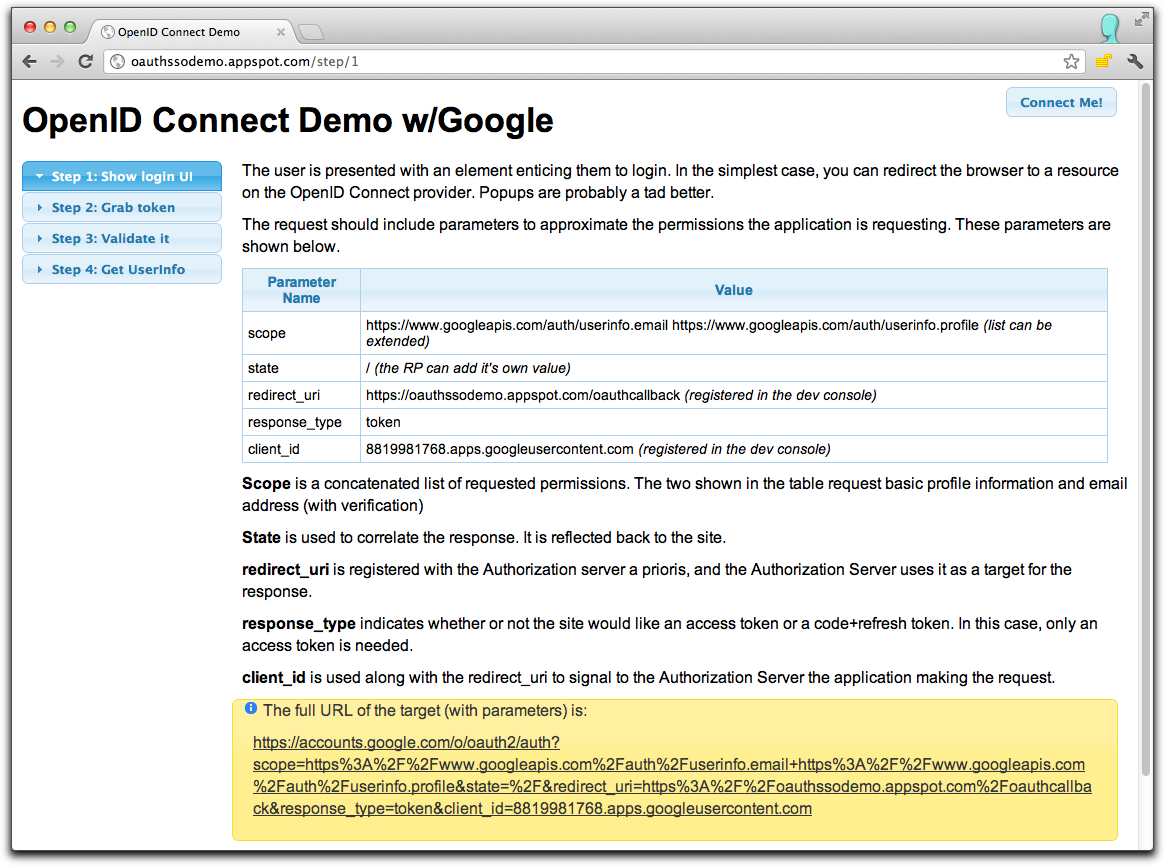
oauthssodemo.appspot.com
Resources
- These slides - oauth2-preso.appspot.com
- APIs Console - developers.google.com/console
- JavaScript library - code.google.com/p/google-api-javascript-client
- Python library - code.google.com/p/google-api-python-client
- OAuth 2.0 Playground - developers.google.com/oauthplayground
- OAuth 2.0 Login Demo - oauthssodemo.appspot.com
- Google Play Services - developers.google.com/android/google-play-services
<Thank You!>
